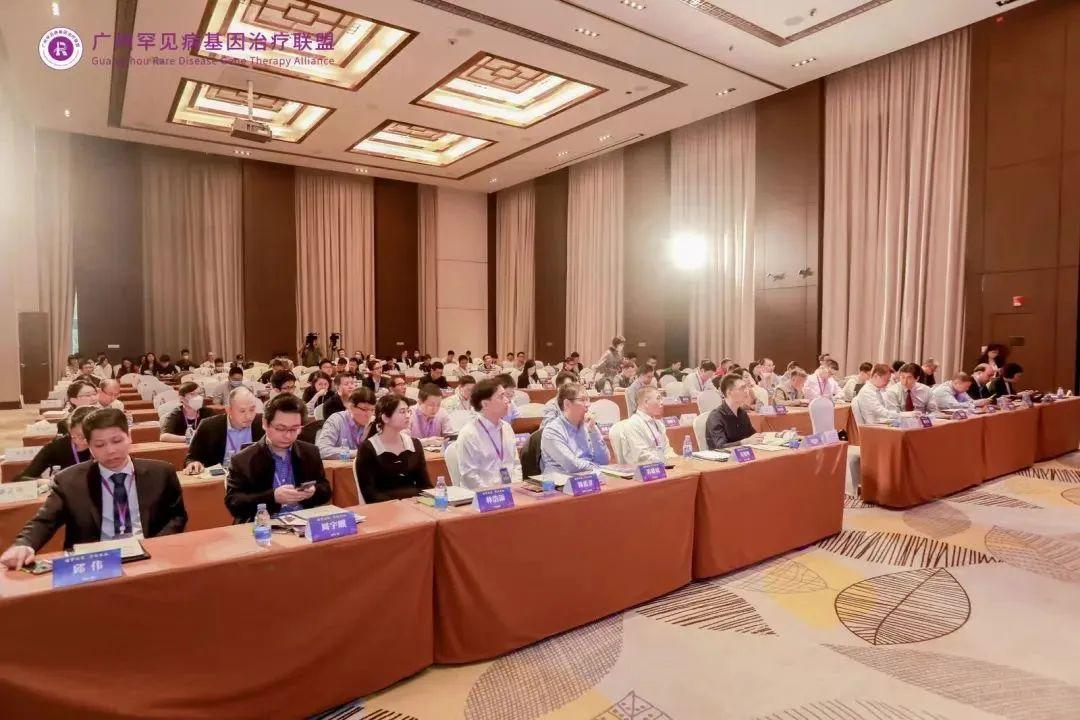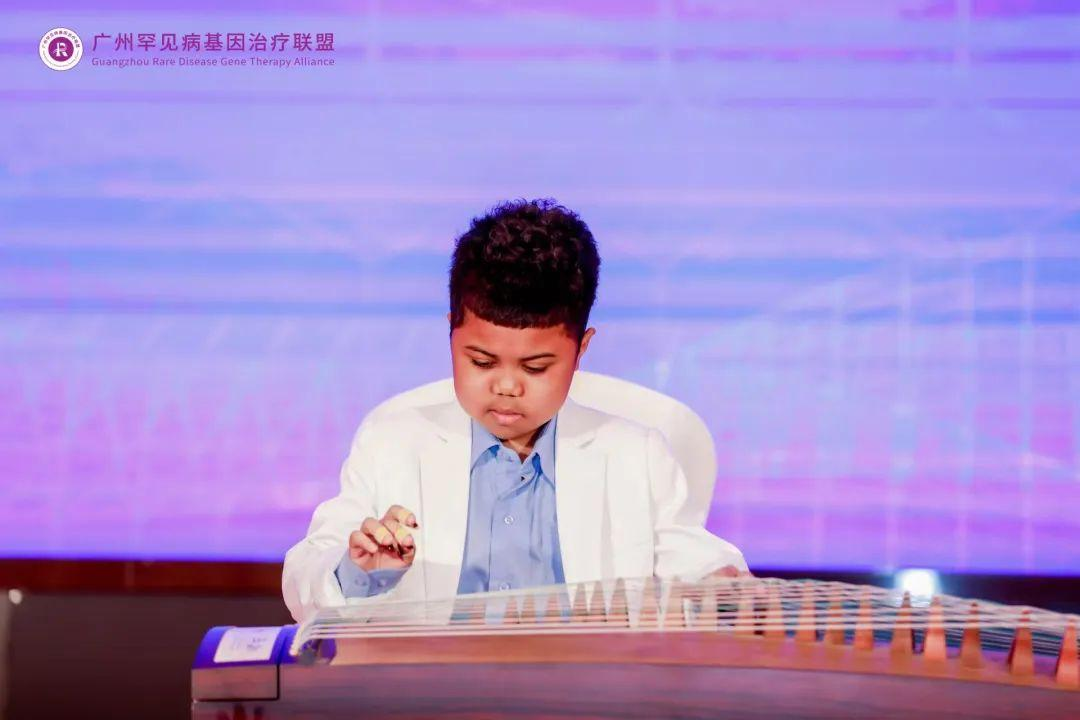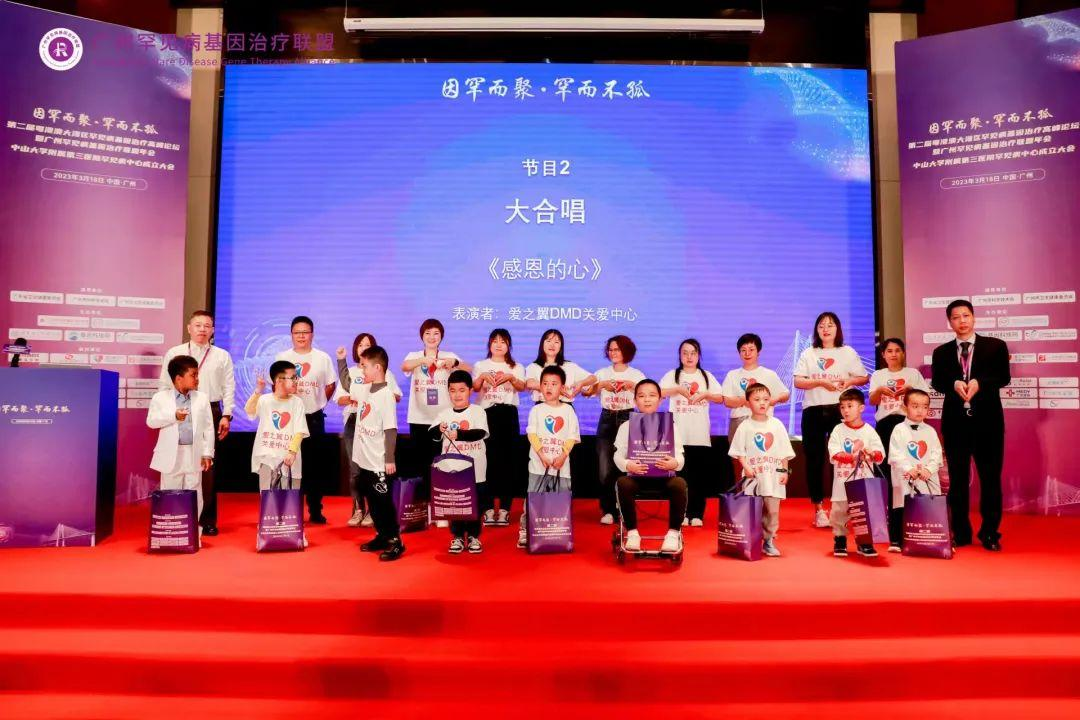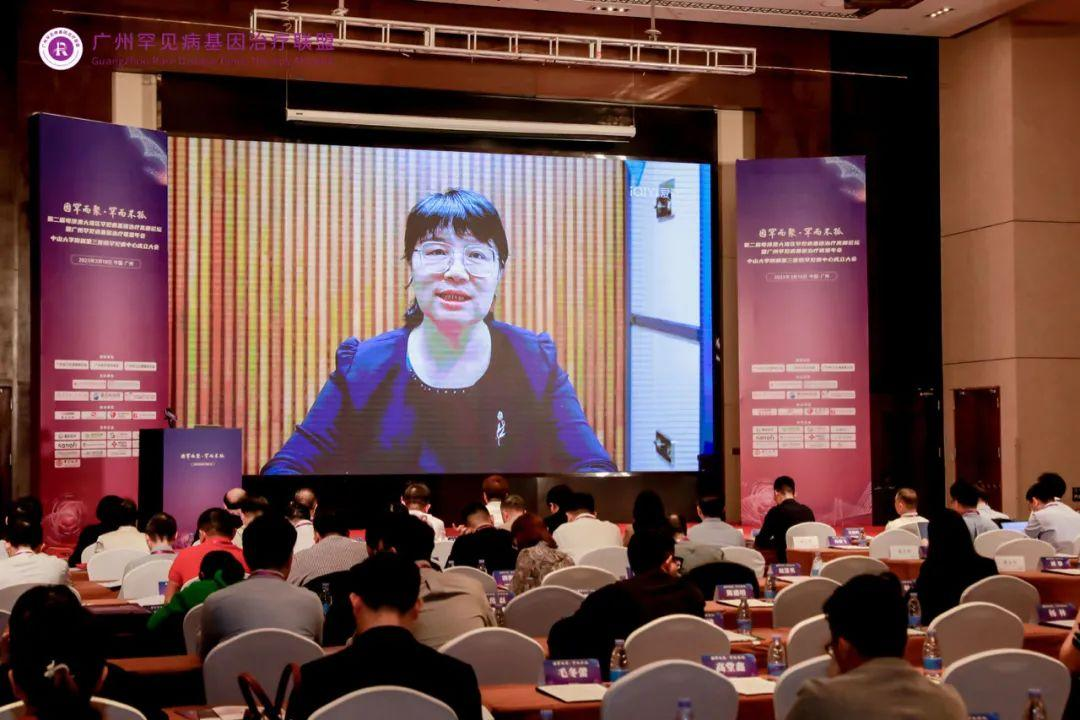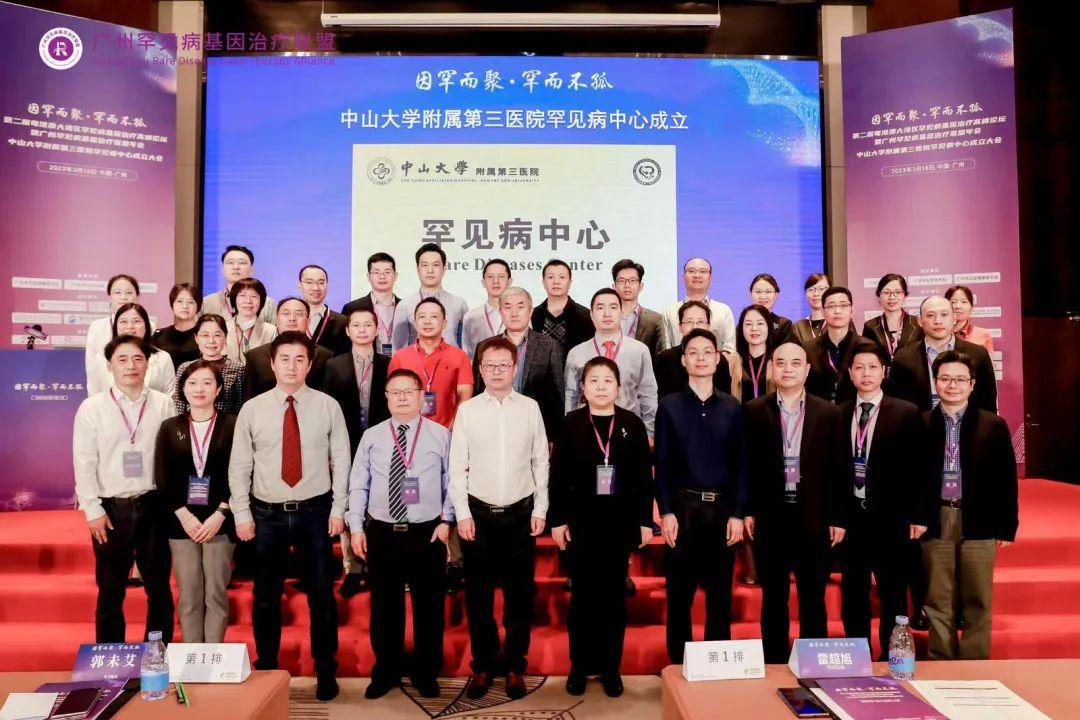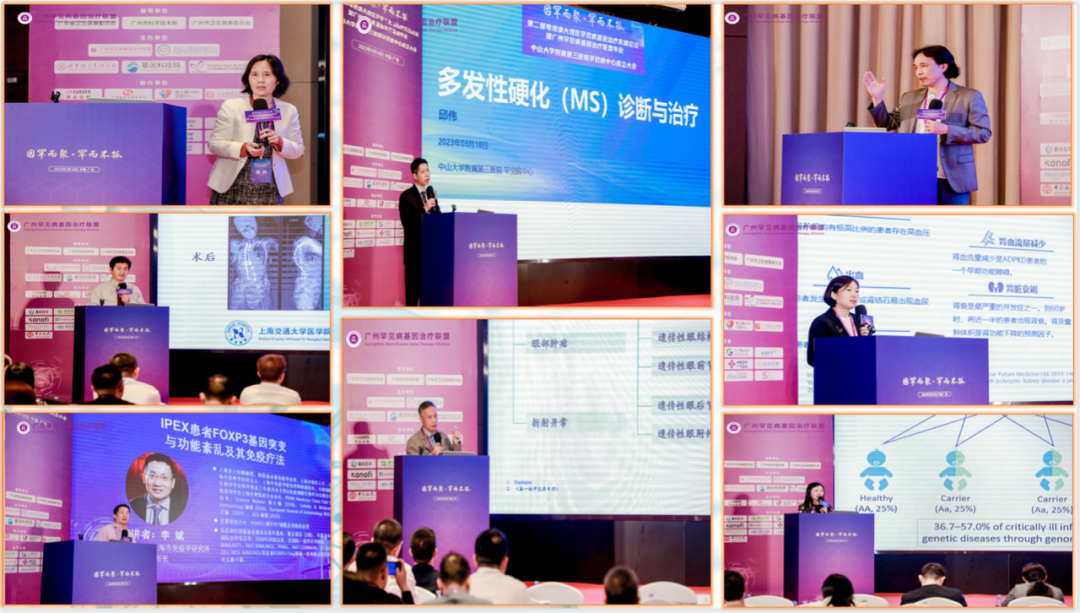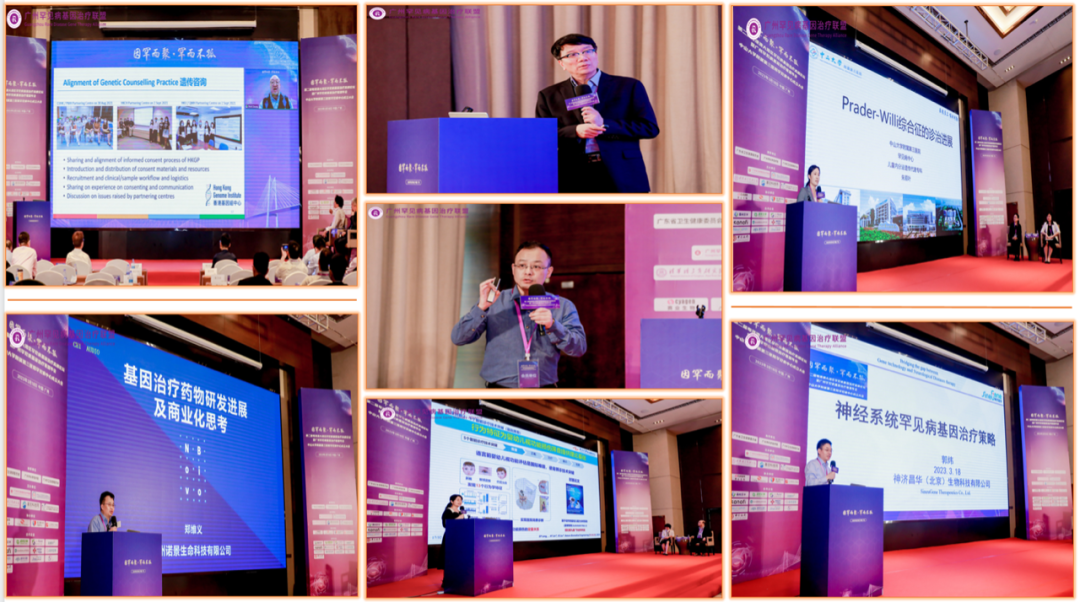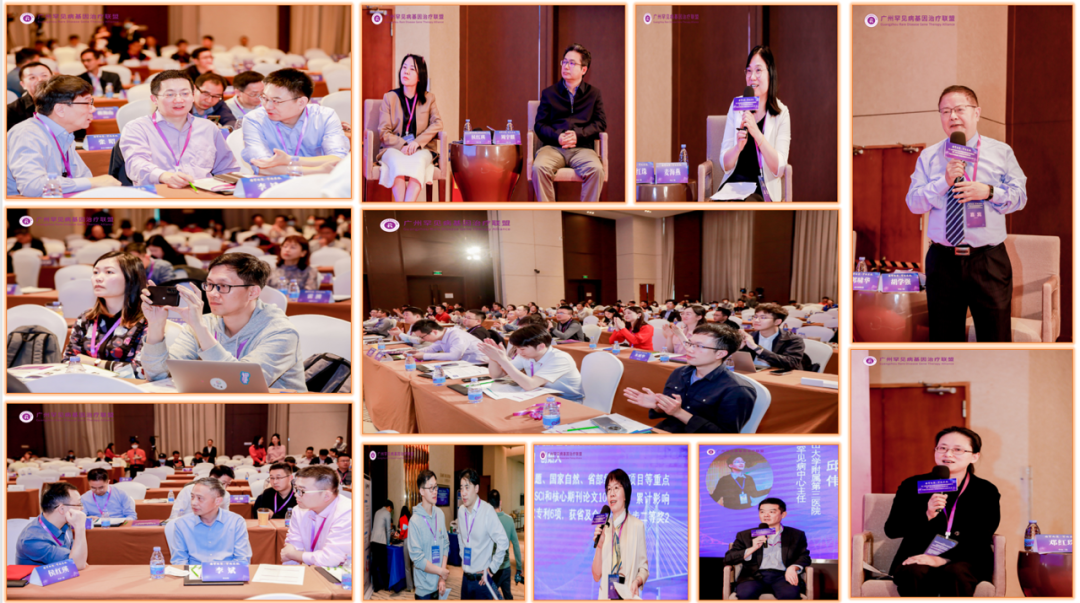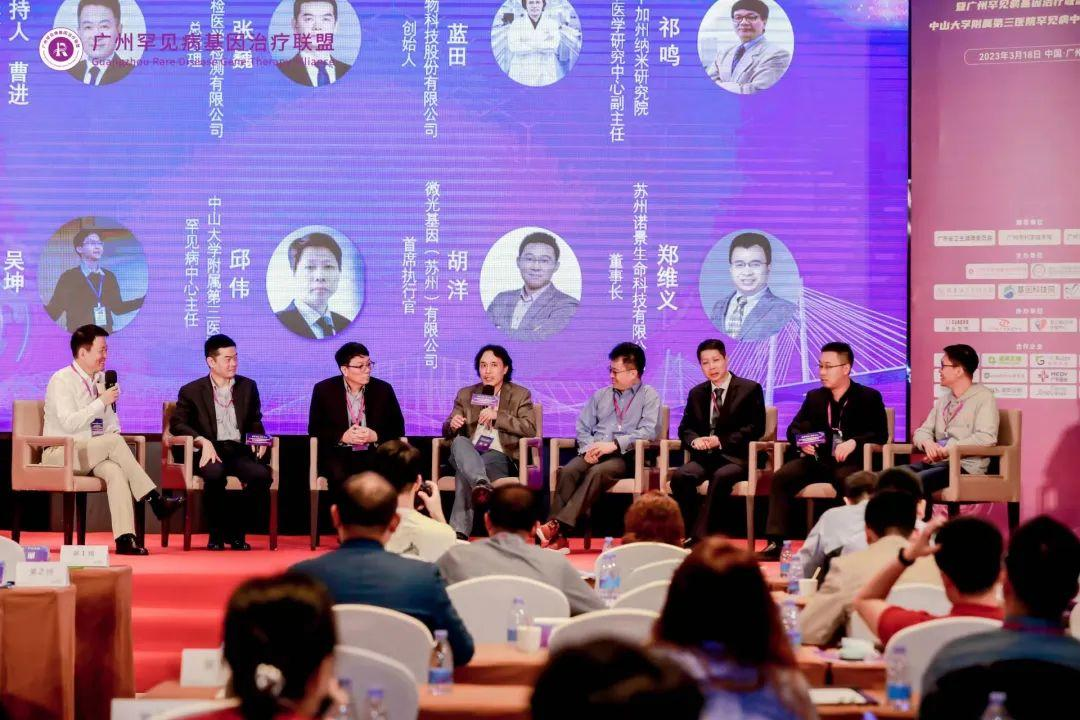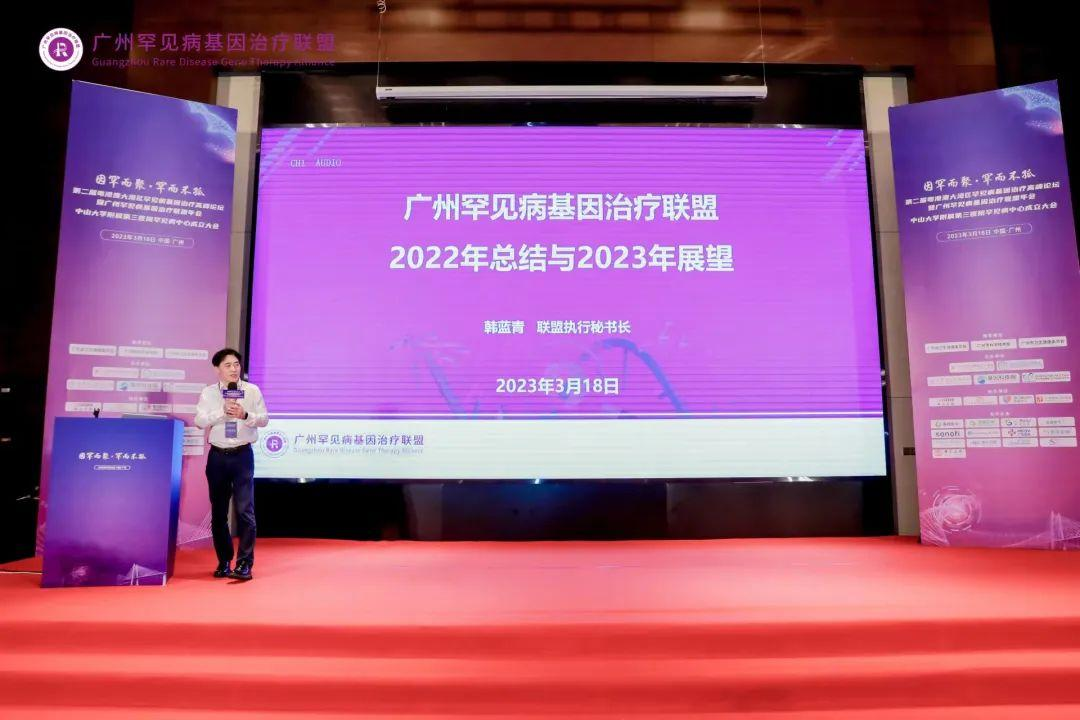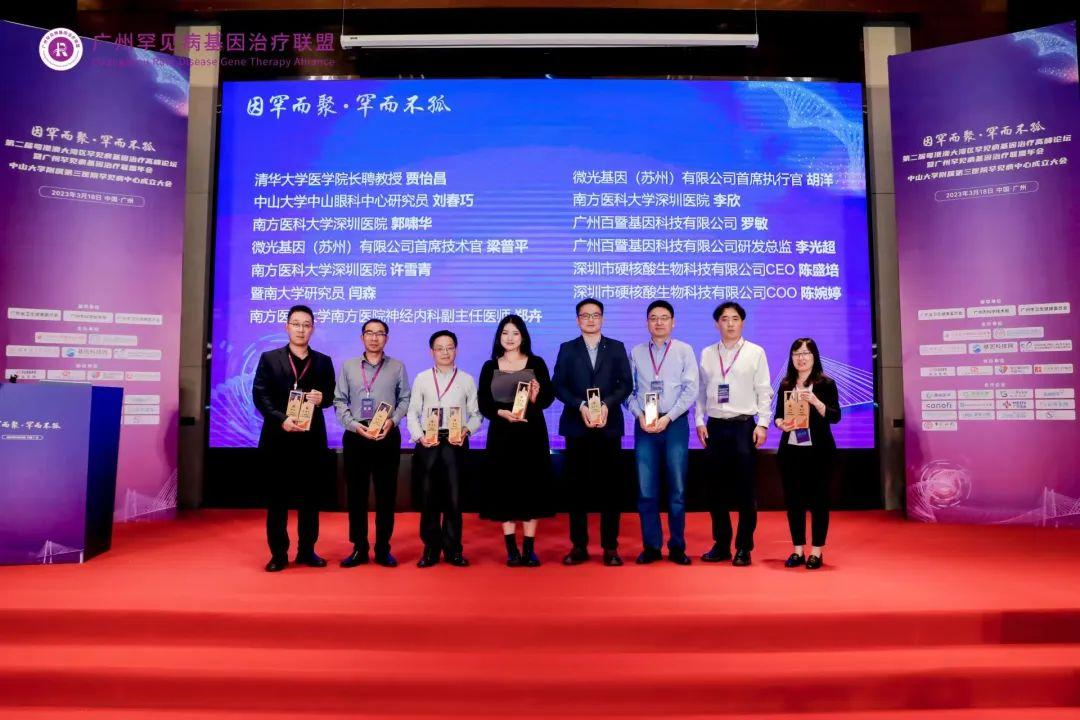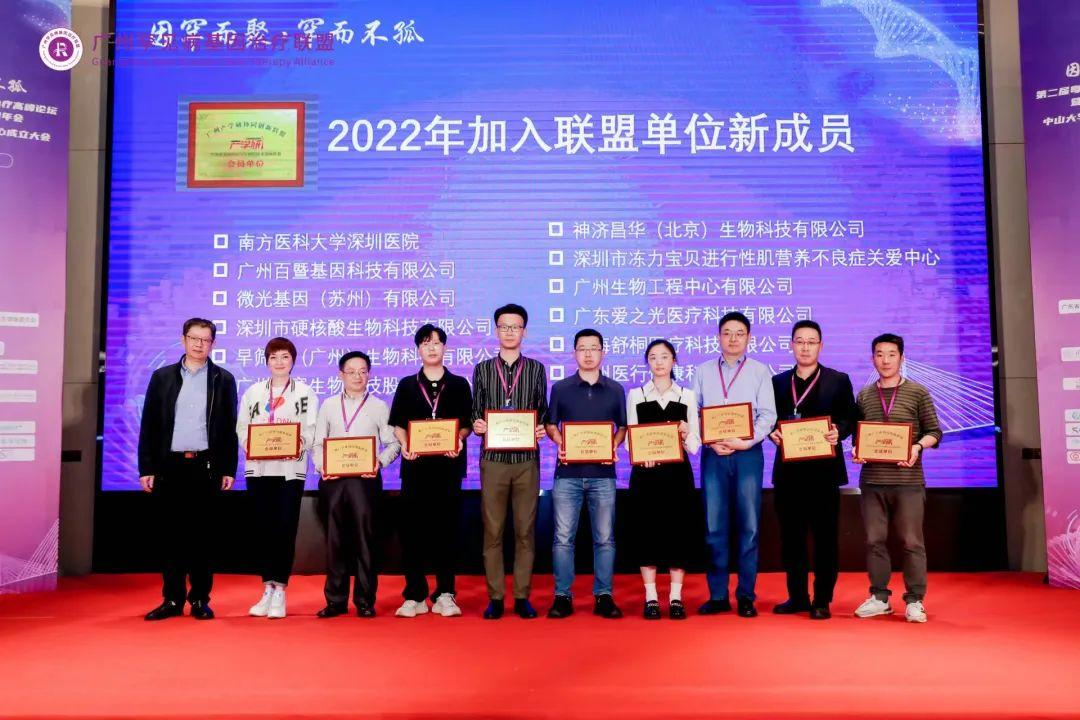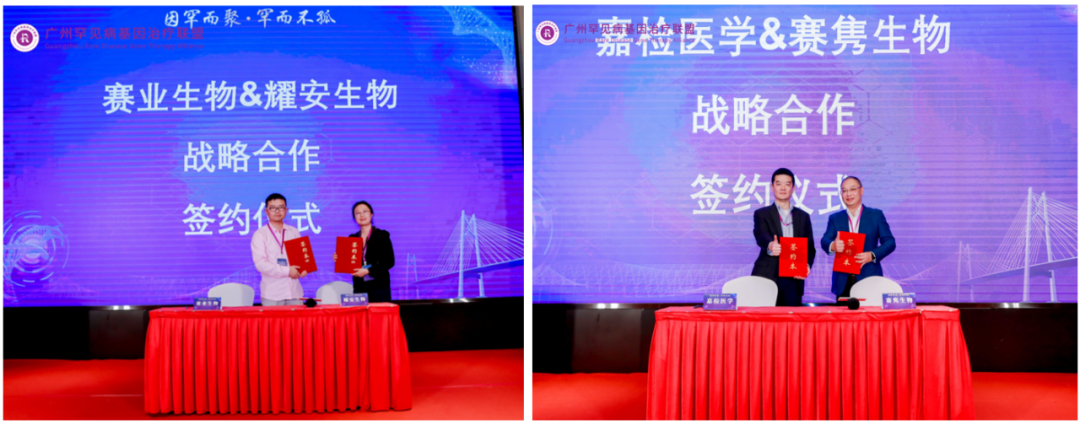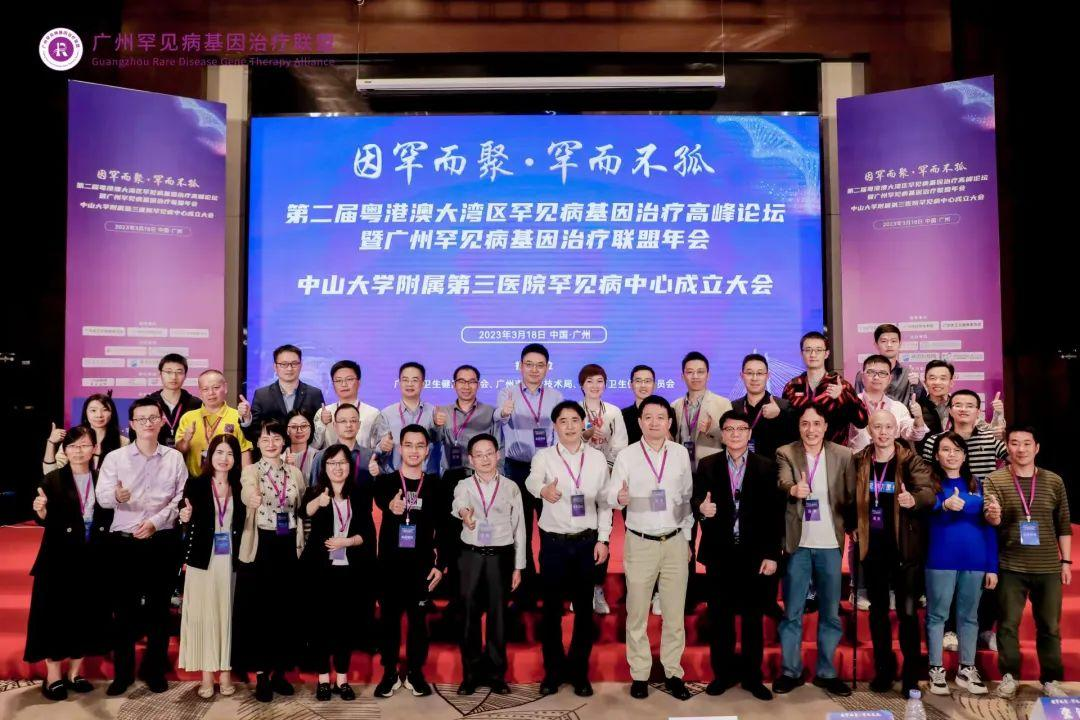Successfully Concluded! The Second Greater Bay Area Rare Disease Gene Therapy Summit provided a platform for communication among the upstream and downstream industries of rare diseases, and helped to promote the development of a healthy China!
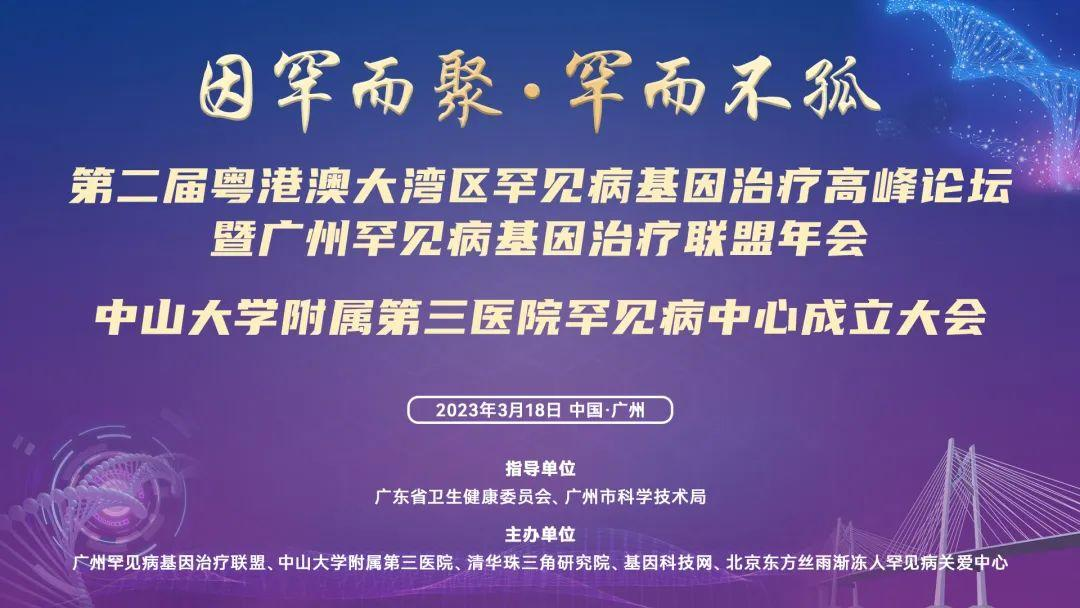
On March 18, the Second Greater Bay Area Rare Disease Gene Therapy Summit, the Guangzhou Rare Disease Gene Therapy Alliance Annual Meeting, and the Inaugural Ceremony of the Rare Disease Center at the Third Affiliated Hospital of Sun Yat-Sen University were held in Guangzhou. Eminent experts and scholars gathered together to share their insights and collaborate on advancing the level of rare disease gene therapy in China. The summit combined virtual and in-person events, featuring a total of 15 speeches and reports, with over 100 well-known experts in attendance and more than 300 scholars participating in-person. The summit was also widely popular online, with more than 48,000 viewers across 5 live-streaming platforms and more than 40,000 likes, receiving enthusiastic interaction and lively discussion.
Figure 2. The Live Event Scene
At the start of the conference, the Love Without Boundaries Duchenne Muscular Dystrophy Care Center for rare disease patients presented two performances, "Listen to Me and Thank You" and "Grateful Hearts," to express gratitude to all caring individuals who are concerned about the diagnosis, treatment, and research of rare diseases. They also demonstrated their positive attitude towards life and love for music, despite their illness. The wonderful performances by the patients received a huge round of applause from the audience. After the performances, Qiu Wei, the director of the Rare Disease Center at the Third Affiliated Hospital of Sun Yat-Sen University, and Wu Bangming, the secretary-general of the Guangzhou Rare Disease Gene Therapy Alliance, presented gifts to the children, showing their concern for the rare disease community and best wishes for their wonderful lives.
Figure 3. Noah, a DMD patient, performed "Listen to Me and Thank You" on Guzheng
Figure 4. The Love Without Boundaries Duchenne Muscular Dystrophy Care Center patient families performed the chorus "Grateful Hearts"
After the performance, Wu Bangming, secretary-general of the Guangzhou Rare Disease Gene Therapy Alliance and vice president of the Tsinghua Pearl River Research Institute, Guo Wiai, deputy director of the Medical Management Division of the Guangdong Province Health Commission, and Wu Jinghong, secretary of the Party Committee at the Third Affiliated Hospital of Sun Yat-Sen University, delivered speeches to the conference. They expressed their concern for rare disease patients, their expectations for the development of rare disease diagnosis and treatment in the Greater Bay Area, their congratulations on the establishment of the Rare Disease Center at the Third Affiliated Hospital, and their best wishes for the success of the summit.
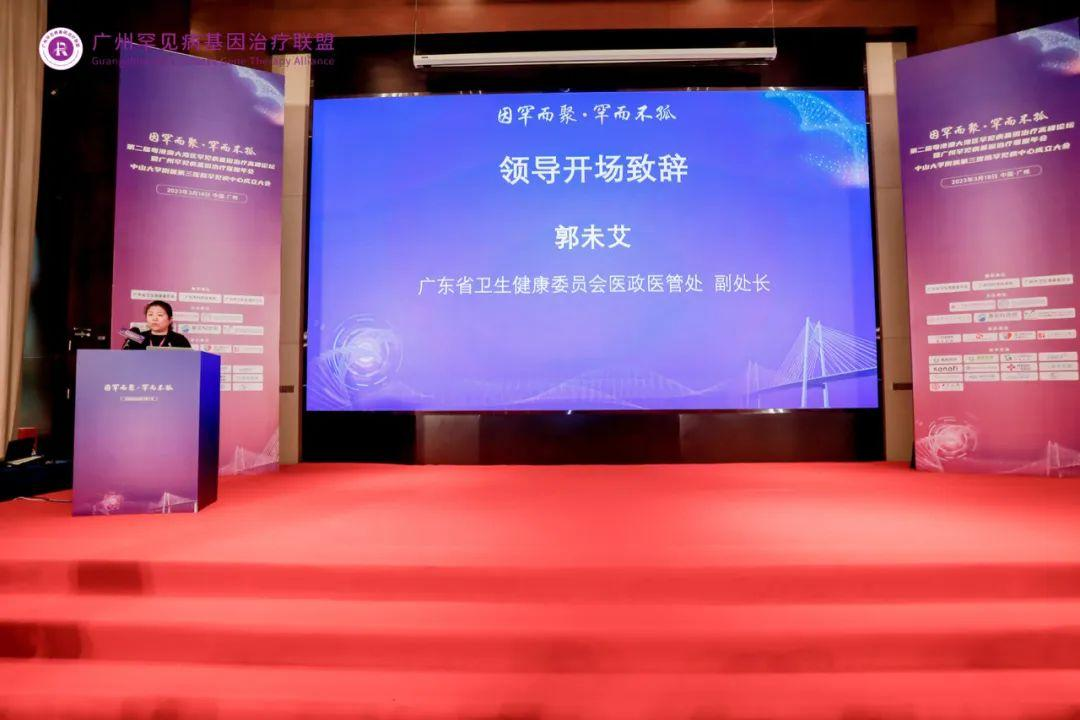
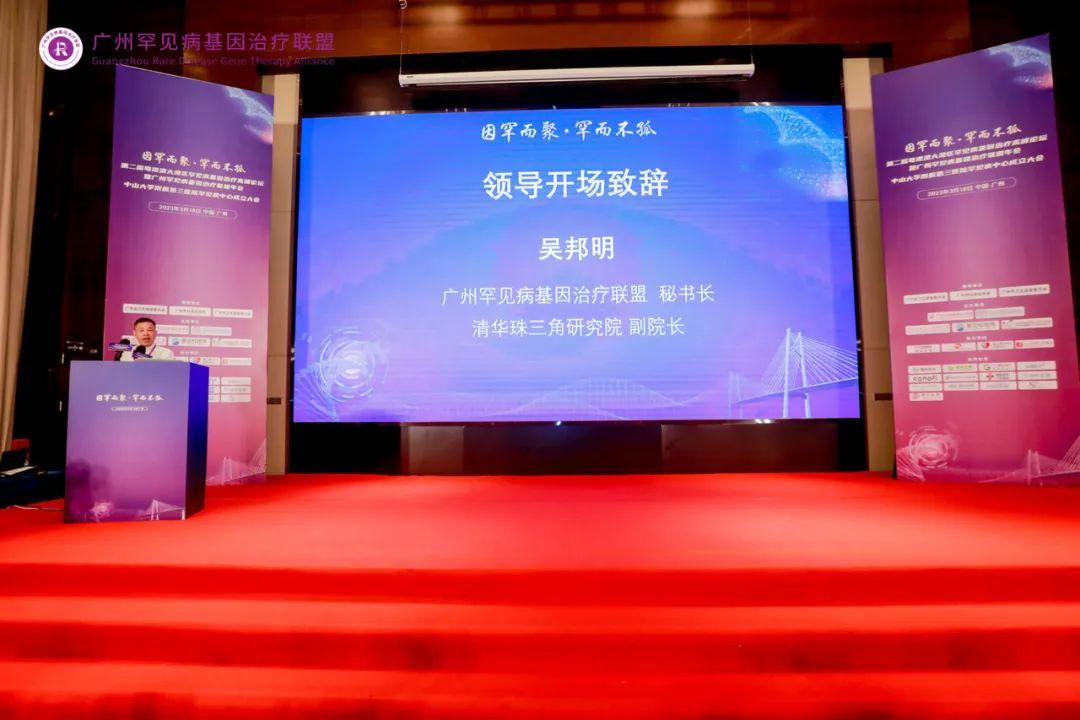
Figure 7. Leaders deliver speeches
Later, the inauguration ceremony of the Rare Disease Center at the Third Affiliated Hospital of Sun Yat-Sen University was held under the witness of Guo Wiai, deputy director of the Medical Management Division of the Guangdong Province Health Commission, Li Tiegang, director of the Medical Management Division of the Guangzhou Health Commission, Lei Xuchao, deputy director of the Industry-Academia-Research Collaboration Division of the Guangzhou Science and Technology Bureau, Hu Xueqiang, head of the Neurology Department at the Third Affiliated Hospital of Sun Yat-Sen University, Yang Junlin, director of the Pediatrics Department at the Xinhua Hospital Affiliated to Shanghai Jiao Tong University, Wu Benquan, head of the Medical Affairs Department at the Third Affiliated Hospital of Sun Yat-Sen University, Han Lanqing, executive secretary-general of the Guangzhou Rare Disease Gene Therapy Alliance, Qiu Wei, director of the Rare Disease Center at the Third Affiliated Hospital of Sun Yat-Sen University, Peng Hui, head of the Internal Medicine Department at the Third Affiliated Hospital of Sun Yat-Sen University, and Zhou Yuqi, head of the Respiratory and Critical Care Department at the Third Affiliated Hospital of Sun Yat-Sen University. The members of the Rare Disease Center took a commemorative photo on-site to record this memorable moment.
Figure 8. Members of the Rare Disease Center take a commemorative photo with the launch guests
During the guest sharing session, 15 experts, researchers, and entrepreneurs in the rare disease research field shared their insights on a range of topics, including digital intelligence research and development for rare diseases, the latest strategies and progress in developing new therapies, considerations for commercializing innovative drugs, the mysteries of pathogenic genes, the Hong Kong genome project, rare disease patient cohorts, and the delivery of gene therapy drugs. Their insightful speeches captivated the attention of the audience on-site.
Figure 9. Guest presentations at the summit
Based on the diagnosis and treatment status quo as well as patient needs and national policy guidelines, experts shared their achievements and insights in rare disease gene therapy based on their own work experience.
Figure 10. Guest presentations at the summit
Figure 11. Lively interaction during on-site questions and discussions
In addition, 8 guests participated in a round-table forum on "How to Build a Good Ecosystem for Rare Disease Gene Therapy", sharing their views and sparking enthusiastic responses from the audience on-site.
Figure 12. Roundtable guests engaged in discussion
During the alliance annual meeting, Han Lanqing, the executive secretary-general of the alliance, summarized the alliance's work in 2022 and expressed outlooks for 2023. Since its establishment, the alliance has attracted more than 30 member units, developed and established the Rare Disease Data Center (RDDC), and independently developed AI tools to empower the diagnosis and treatment of rare diseases. Meanwhile, the alliance actively links resources, establishes a resource-sharing platform, shares industry-related information through public and video accounts, invites clinical experts to participate in interviews for the "Journey of Rare Diseases" program, and organizes visits to member units, becoming a bridge for cooperation among various units. In 2023, the alliance will continue to communicate with member units, organize industry exchanges, link up upstream and downstream resources of "industry, academia, research, and medicine," expand domestic and foreign cooperation, explore joint research programs, and upgrade the Rare Disease Data Center, making the alliance more dynamic.
Figure 13. Speech by Han Lanqing
Subsequently, the alliance held an awarding ceremony, during which Han Lanqing, the executive secretary-general of the alliance, and Su Xiongbin, deputy general manager of the Guangzhou Productivity Promotion Center, presented awards to 13 new members and 12 new member units that recently joinede the alliance.
Figure 14. New member experts take a commemorative photo
Figure 15. Representatives of the new member units take a commemorative photo
During this event, two alliance member units, Sanyou Biopharmaceuticals and Yao'an Biotechnology, held a strategic signing cooperation ceremony, jointly launching the treatment research of GM2A gene mutations for neurological diseases with Dr. Walia from Queen's University in Canada and domestic clinical experts. Another alliance member unit, Jiachen Medical, and Sajun Biotechnology also held a strategic signing ceremony, committing to establishing a comprehensive partnership in areas such as clinical diagnosis of rare diseases and the development of CGT therapies.
Figure 16. Sanyou Biopharmaceuticals and Yao'an Biotechnology signing ceremony; Jiachen Medical and Sajun Biotechnology signing ceremony.
Finally, representatives of each alliance member unit took a group photo with the alliance experts to commemorate the event, and the conference concluded successfully. Many of the audience on-site were still excited and stayed around in small groups, exchanging ideas, and sharing their gains from the conference. They expressed their gratitude to the organizers and hoped that the organizing committee would hold more rare disease exchange conferences, link the upstream and downstream industries, promote multi-party exchanges, and break down information silos.
Figure 17. Representatives of alliance member units take a group photo with alliance experts
